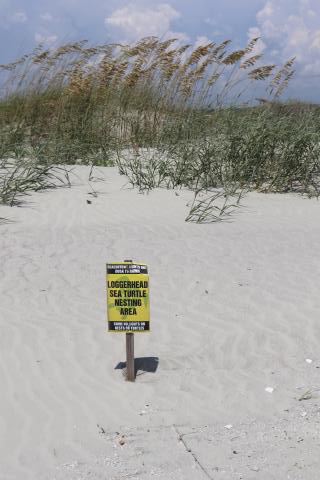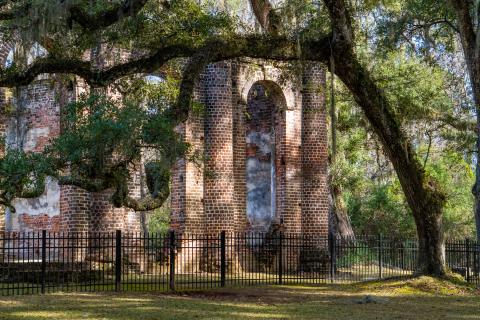The most common Geographic Areas of Particular Concern (GAPCs) include Threatened and Endangered Species and Areas of Special Historic, Archaeological or Cultural Significance. If you are aware that any of the following on the site property exist, please include any documentation. Learn more about each GAPC below.
Coastal Zone Consistency Review of Geographic Areas of Particular Concern (GAPCs)
The Coastal Zone Management Program (CZMP) requires that special management consideration be given to those areas designated as Geographic Areas of Particular Concern (GAPCs) when reviewing proposed activities for permits in the Critical Areas, or for Coastal Zone Consistency Certification (CZC) of other Agency permits in the coastal zone. When a project overlaps with, is adjacent to, or significantly affects a GAPC, BCM will carefully evaluate the project based on the criteria listed as the priority of uses which specifically address each type of GAPC. A project will be prohibited if it would permanently disrupt the priority uses of the designated area. A project would be strongly discouraged or the permit conditioned if the project would interrupt, disturb or otherwise significantly impact the priority uses of the designated area.
Policies for GAPCs
BCM has designated the GAPCs discussed in this document because of their unique importance as natural, aesthetic, recreational, scientific, or economic resources in the coastal zone. The existing State management authority for each GAPC is identified, and the priority of uses within each area is specified. In addition, management policies and permitting Rules and Regulations of BCM for certain specified activities or alterations shall apply to designated GAPCs, where relevant.
Goals
The goals of the South Carolina CZMP for preservation and development of GAPCs are:
1. to give highest priority to the identified primary value of a GAPC when considering the preservation or development of that area.
2. to ensure that management of GAPCs is consistent with other policies of the South Carolina CZMP.
Objectives
The management of GAPCs shall be carried out in such a manner as to:
1. Prevent, where possible, the disruption of valuable coastal resources.
2. Protect the integrity of natural resource areas and preserve the unique and fragile areas.
3. Protect the habitats of wildlife and marine species, particularly those with special commercial, recreational or ecological value.
4. Improve access to and management of recreational areas.
5. Increase the usefulness of and access to economically important resources, without undue restrictions on the activities, while minimizing negative environmental impacts.
6. Avoid preemption of appropriate commercial growth where it is consistent with the use of the areas.
7. Encourage environmentally sound growth patterns and development practices where growth and development are priority uses of the area.
8. Discourage development in high-risk areas, where damage to life, property, and coastal resources in likely to be severe.
Types of GAPCs
1. Areas of Unique Natural Resource Value
A. Heritage Trust Sites - Priority of Uses
The following are the priority of uses for areas deeded into the Heritage Trust Program, beginning with the use of highest priority:
- Uses which are consistent with the management plan developed for each property.
- Uses which allow public enjoyment of the area, as long as the primary natural character of the area is not disrupted.
- Uses which are compatible with the area’s wildlife and wildlife management.
Prohibited uses are any which jeopardize the integrity of the Heritage Trust Program.
B. State Wildlife Preserves - Priority of Uses
The following are the priority of uses for areas deeded into the State Wildlife Preserve Program, beginning with the use of highest priority:
- Uses which are consistent with the wildlife management plan for each preserve.
- Uses which are compatible with the preserve's wildlife, wildlife habitats and wildlife management and simultaneously provide public recreational opportunities, such as hunting and fishing.
C. State Parks - Priority of Uses
The following are the priority of uses for State Parks, beginning with the use of highest priority:
- Varied recreational activities open to the public.
- Non-intensive uses which require minimal feasible alteration and maintain the natural functions of the area.
- Provision of educational opportunities to visitors of the parks.
D. Scenic Rivers – Priority of Uses
The following are the priority of uses for State Parks, beginning with the use of highest priority:
- Uses which are consistent with the management plans developed by DNR. Each plan will be a comprehensive water and related use plan designed to protect the significant resources of each river section designated.
- Uses which maintain long-term natural functions of the river while affording public recreational activities, especially those of a passive nature.
E. Marine and Estuarine Sanctuaries
Though their collective missions are different, the priority of uses is explained in each of the Management Plans for Marine and Estuarine Reserves (ACE Basin and North Inlet – Winyah Bay National Estuarine Research Reserves (NERRS).
The mission for North Inlet NERR is to promote stewardship in the North Inlet and Winyah Bay watersheds through science and education. Three priority issues over the next several years that will help NI-WB achieve this mission and vision by researching impacts of coastal growth on water and habitat quality and ecological communities, impacts of naturally occurring short-term, stochastic and long-term, large-scale climate events on coastal ecosystems and human communities, and impacts of invasive species and habitat loss on biodiversity.
The mission of the ACE Basin NERR four priority issues are habitat conservation, water quality, public access and use of reserve-managed resources, and community resilience.
F. Shellfish Areas
The following are the priority of uses for all commercial and recreational shellfish areas beginning with the use of highest priority:
- Water-dependent uses which do not reduce or degrade the quality of shellfish lease area or limit access to the area.
- Water enhanced activities or nonwater-dependent uses which do not reduce or degrade the quality of the shellfish lease area or limit access to the area.




